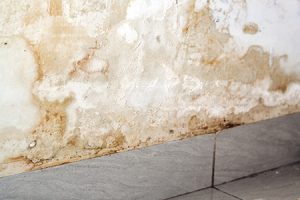Usual Reasons For Water Damage in a Bathroom
Start NowDo you find yourself searching for answers around How to Repair and Prevent Bathroom Water Damage?

The bathroom is extremely at risk for damp build-up and also possible water damages because of the frequent use water in it. This post provides simple assessment methods to help spotting water damage hazards.
The constant use water in the restroom makes it extremely vulnerable for wet buildup as well as potential water damages. By checking it frequently, you can reduce water related problems.
The complying with set of examinations is simple to carry out and need to be done when in every 3 months in order to maintain your bathroom healthy and to stop potential water problems triggered by the bath tub, the shower, pipe joints and plumbing, sinks, closets, and the bathroom
Do not neglect executing these examinations as well as be extensive while executing them. Remember that these basic assessments can save you a great deal of money by supplying very early signs for water damage
Sinks as well as Cabinets
Sinks and also cupboards are revealed to wetness as well as humidity everyday and are commonly overlooked. Evaluate frequently under the sink and on the kitchen counter above it. Fix any type of drip in the catch as it may recommend drain troubles. Take a look around the sink, slow-moving draining pipes might indicate an obstructed drain. Change sink seals if they are split or loose.
Bath tub and Shower
The shower and also tub require unique attention and also maintenance. Examine the ceramic tiles and also replace if fractured. Ensure that there is no missing grout in between the tiles. Check and replace fractured caulking at joints where the walls fulfill the floor or the tub. Obstructed drains as well as pipelines problems will certainly prevent the bathtub from drying and also may suggest significant troubles below the tub. Consult with an expert promptly to avoid architectural damage. Take notice of discolorations or soft areas around the bath tub wall surfaces as they may show an interior leakage.
Plumbing
Signs for water damage are difficult to find since a lot of pipelines are installed inside the wall surfaces.
Pay unique attention to floor covering and also walls wetness and also stains as they may show an invisible plumbing issue. Examine moisture levels in adjacent areas as well.
The Toilet
The bathroom is an at risk water junction. Inspect the water lines as well as look for leaks around the toilet seat, in the pipe, and also under the water tank. If you spot any type of indicators of moisture on the floor around the bathroom, look for leakages in the toilet edge and tank seals.
Know that hanging commode dish deodorants increases the possibilities for blockages.
Water Damage Signs In The Bathroom To Avoid Cleanup
Musty smell
This is one of the easiest signs to catch because musty smells are so odorous. The damp, earthy, moldy smell should be a big red flag. The smell will develop when moisture gets trapped in surfaces, and begins to facilitate mold growth. Leaking pipes under cabinets, inside walls, and behind shower fixtures will cause moisture to stay trapped and not dry, which will lead to mold growth and spread. As soon as you notice any musty smells in your bathroom, have it checked for hidden water damage and cleanup signs.
Visible mold
If the smell isn’t there to give it away, sometimes you will actually see mold growth. Finding mold in your bathroom is a serious problem, because mold is very harmful to your health. By the time mold growth is visible, it also means that water damage has already occurred and been present for some time. The only way the mold problem can be resolved is to find the source of the moisture and get it stopped. To safely and adequately remove mold, you need to have professionals handle the remediation. Do not waste any time in getting mold problems addressed, fixed, and sanitized so that you can protect you and your family from the many respiratory symptoms caused by mold exposure.
Damaged floors
Bathroom floors should be able to withstand some exposure to water while still remaining in good condition. However, when excess exposure or water leaks occur, they will begin to damage even the most water-resistant flooring. If you notice any cracking, bubbling, staining, or warping on your bathroom floors, there is probably a water leak somewhere causing the distortion. If you notice areas of the floor have become softer, or even have a spongy feeling, there is probably damage to the subfloor. Subflooring is typically made up of plywood. When plywood is exposed to water or moisture, it will absorb it. Once it has become saturated, the weight of the excess water will cause the wood to swell and soften. Check the floors in your bathroom frequently to catch any of these sings before they lead to damaged subflooring.
Changes on walls
When water leaks behind walls, it will cause changes in the drywall. Peeling plaster, blistering paint, and soggy wallpaper are all good indicators that excess water is building up behind the wall. Water leaking behind drywall will cause it to swell and be soft to the tough. If you start to notice gaps along the trim of your walls, or where tile meets the wall, it could also be a strong indicator that there is a leak behind the wall. Any changes, distortion, or damage on the walls should be evaluated as soon as you notice it to prevent further water damage and cleanup.

We were made aware of that report about Looking for Signs of Water Damage in the Bathroom through a friend on our other site. Enjoyed our content? Please share it. Help somebody else locate it. We enjoy reading our article about Looking for Signs of Water Damage in the Bathroom.
Click Here To Find Out More